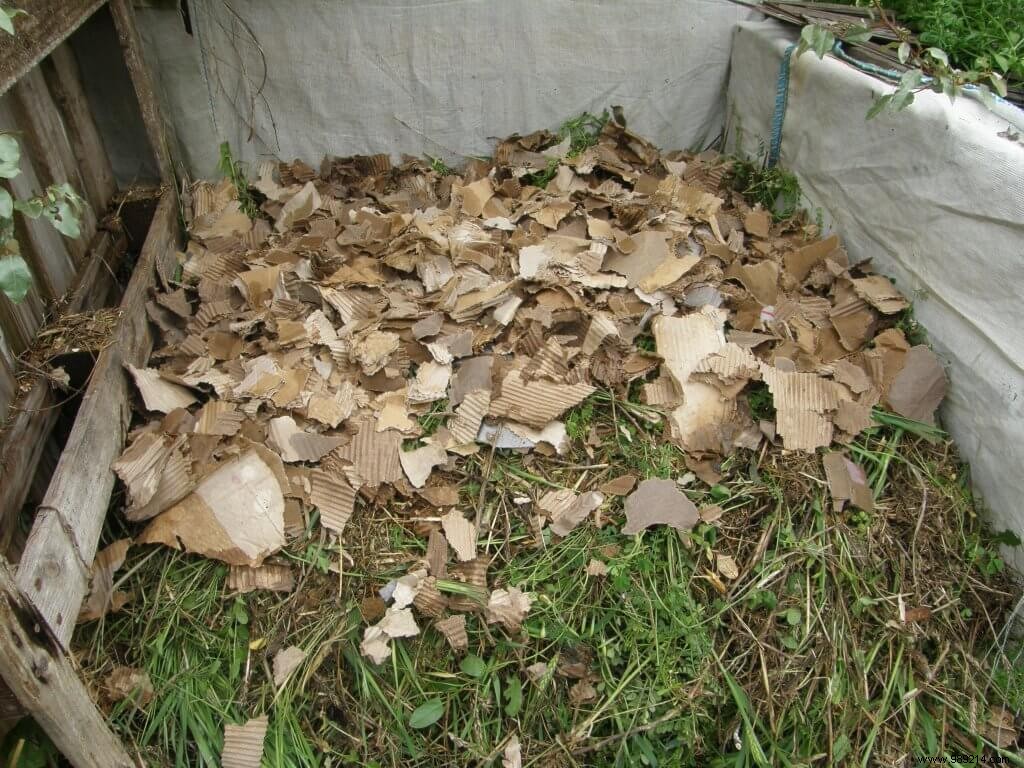30% of the waste we produce is decomposable. They are organic, that is to say coming from the living. These are fruit and vegetable peelings from the kitchen, but also garden waste, clippings, prunings, leaves, dried herbs...
Find a shady location. This is the place that will receive the composting area. A composter, a box made with pallets placed on fields… It doesn't matter. It's the inputs that matter.
But to be effective, composting must respect 3 simple but essential rules.
Two types of waste are to be differentiated, green and brown. Green waste is anything that looks like grass and is wet. There you can find freshly mowed grass, uprooted grass, hedge trimmings in season (well in sap), but also kitchen waste, vegetable and fruit peelings.
brown waste is that reminiscent of wood, or straw. What is dry. From the kitchen come the shells of walnuts, almonds... pits, egg shells... And in the garden, there are dead leaves, straw, dry grass, faded flowers, small branches. These must be cut into small pieces, or pass through a vegetable shredder. There is also, mounted on a backpack brushcutter, a U-shaped blade
It is recommended to optimize home composting, to mix 60% green materials and 40% brown materials. In reality, we mix a little what we have, when we have some… However, if the proportion of brown materials is too low, composting is bad and becomes a source of bad smells. Cardboard becomes our saviour! Just cut cardboard into small pieces and incorporate it into the green materials, and you're done.

Here is the binomial success factor:aeration by mixing the ingredients and watering because the compost being made must be moist. Not soggy, just damp. Therefore, depending on the weather, what you incorporate, you need to water your compost "pile" with a watering can of water. Especially if you return it. How many times to stir? Once a month is good, three times a year being a minimum...
All alone ! Or almost... A phenomenal number of large and small animals, microscopic organisms will live in this manna, eat it, digest it, stir it, which does not prevent them from eating each other either... Life what! Insects, larvae, worms of all kinds, bacteria, protozoa, fungi… everyone works for you. The temperature will rise above 60°C! which destroys pathogens such as pest fungus spores (oidium, mildew, rust, etc.) as well as the germinative power of the seeds of so-called "undesirable" plants. The temperature goes down in a few days. This is where the future inhabitants of the compost come in. And in a few months (you have to be patient) the waste will turn into a material that looks like compost with a smell of undergrowth. It is ready to be used.
Anything that is not biodegradable! Plastic, glass, metals… We will avoid bread, meat and fish, for smells and the arrival of rats and other large animals. But you will also forget vacuum bags, house sweepings, cat litter (unless stipulated biodegradable), disposable diapers, corks. Only unglazed newspaper can be composted, but it is preferable to carry it in the paper containers of the municipality.
Wood ashes (chimney) can be incorporated into the compost but in very small quantities. (1 kg / m3) It is better to spread them directly on the ground in the garden (one shovel/shrub/year!)
Sawdust is allowed, that of chipboard or plywood is to be avoided
I saved the best for last! Compost promotes the growth of plants and their resistance to diseases and parasites. It improves the rate of diffusion of nutrients, improves the porosity of the soil (aerates the soil). Compost also improves the ability to retain water. And, which is not the least, reduces the volume of waste treated by the community (plastic garbage bags, transport of waste, reprocessing, etc.)